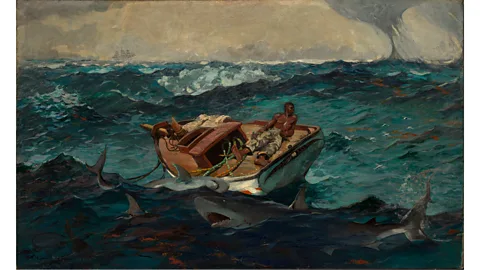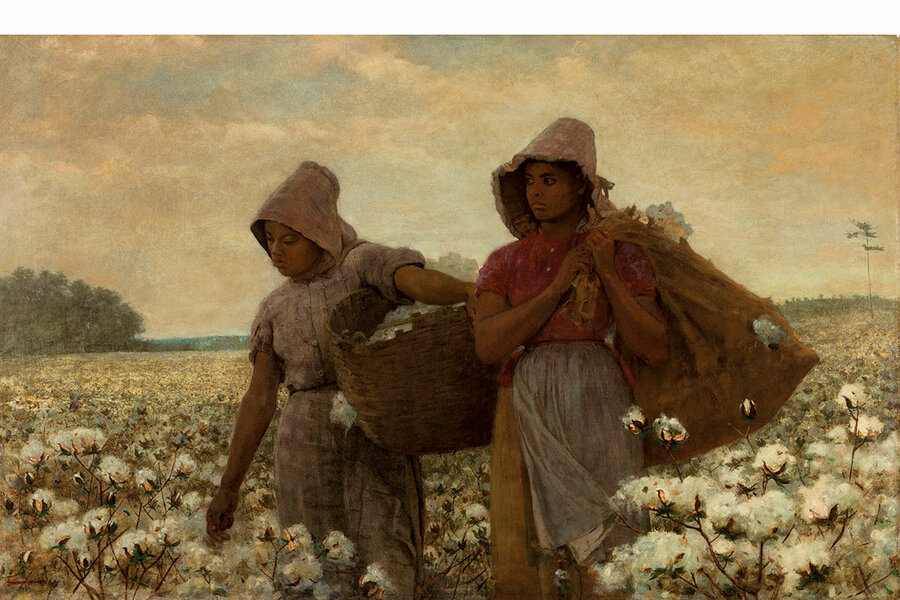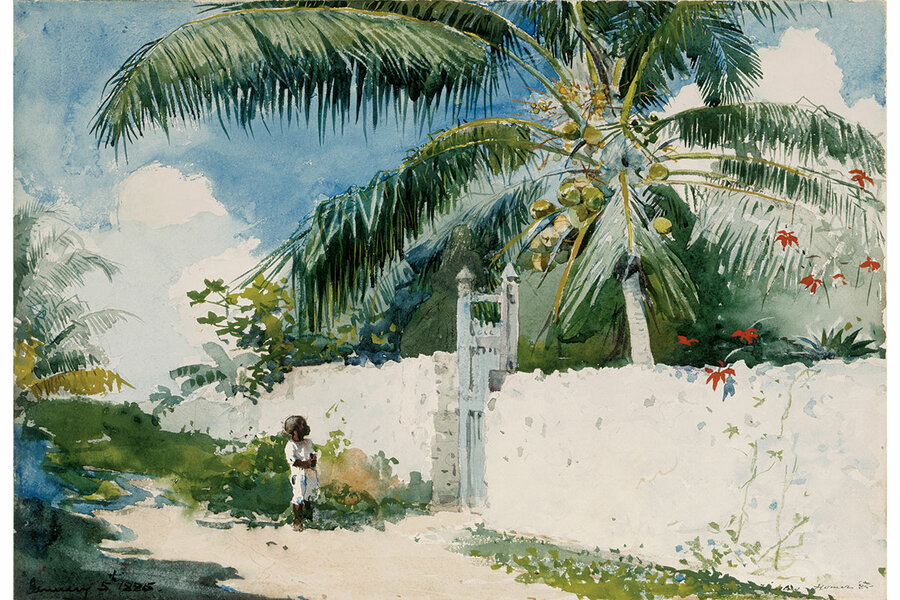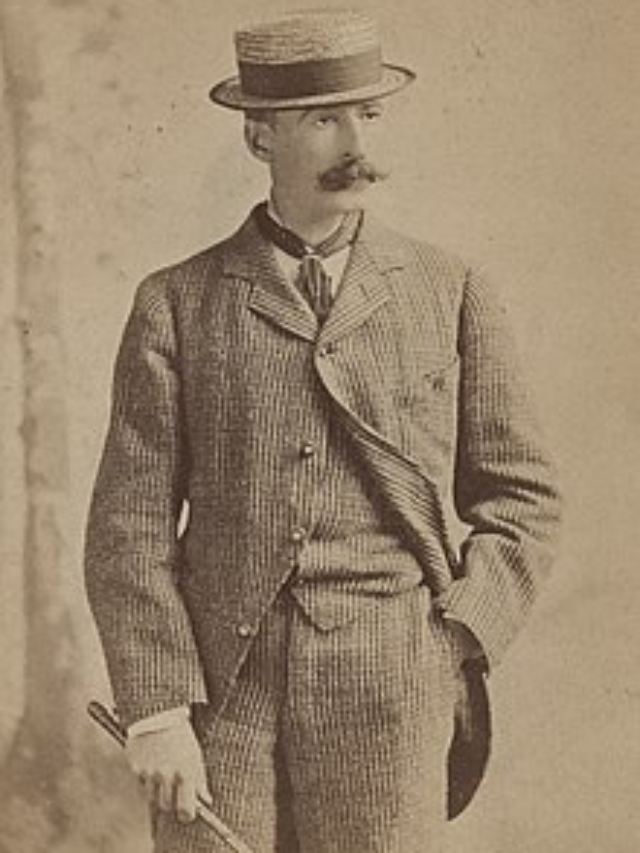Introduction
Winslow Homer has a special place within the psyche of many Americans, a renowned figure who swept over American art in the nineteenth century, he was known for his bright renditions on landscapes and vast seascapes. In addition, he portrayed African-American labourers in Virginia during the Reconstruction era, troops fighting in the Civil War, and early pictures of New England life for Harper’s Weekly. Being a keen observer of the world, Homer also delved into experimenting with colour, form, and composition, which led him to push the boundaries of landscapes and genre pictures into modern artistic directions. In this article, we chart the story of this famous artist who gave us a glimpse of a new America in his paintings.

Early Life
Homer began his career as a commercial printer after being raised in rural Cambridge after being born in Boston. After moving to New York in 1859, he worked in Boston and then there. In addition to taking drawing classes at the National Academy of Design, he took on tasks for Harper’s Weekly and other periodicals. In 1861, he took a short course in oil painting in the spring. He was dispatched to the front lines in Virginia as an artist-correspondent for Harper’s Weekly in October of that same year. Like his prints, his early Civil War paintings, created in 1863, were narrative. But as the conflict drew to a close, works of art such as Prisoners from the Front and The Veteran in a New Field demonstrated a greater comprehension of the conflict’s effects and its significance.
Homer’s Representations of Black Subjects
His early work with black subjects was embellished with great symbolism such as the one called “Near Andersonville” (1866), a Black woman who was formerly enslaved is shown standing in front of a shack, signifying her journey from the shadows into the unknown. Confederate soldiers are seen in the background escorting Union prisoners to Andersonville, an infamous Georgian prison camp where thousands of people perished in horrifying circumstances. Ten years later, Homer portrayed the complex and painful realities of that era in “A Visit From the Old Mistress,” whereby three Black ladies are shown receiving their old white enslaver with calm dignity.

Soon after, in 1885, he visited the Bahamas and that changed the tonal value of his paintings, although they have black subjects within them still, they became lighter and full of great foliage and beautiful landscapes. The masterwork from Homer’s two trips to the Bahamas was “The Gulf Stream” (1899, revised 1906). Homer’s composition “The Gulf Stream” is replete with reflections associated with slavery. At first, the deck’s images of sugar cane were subdued. Homer highlights them in the later version, though, pointing out the Gulf Stream’s role in the trafficking of slaves and the movement of the goods produced by their labor, including sugar.
Around the time frame of the 1860s and 70s, a vast and varied body of work resulted from an explosion of artistic innovation in the artist’s life. During this time, Homer lived for ten months in Paris and the rural areas of France. Homer’s paintings contain many of the themes and fascinations of the French avant-garde, including free brushwork, outside light, and basic forms inspired by Japanese design principles. However, it is unclear that he was directly influenced by them.

Homer and His Era of Solitude
Winslow Homer’s art became more intense in the early 1880s as he pursued seclusion. He settled at Cullercoats on a tour to England in 1881, when he painted the hard life of the locals, especially the women near the shore. After making a quick trip back to New York, he relocated to Prouts Neck, Maine, where he found solitude to be inspiring. The battle between humanity and the sea, as well as the enduring bond between nature and human existence, were major themes in his later works. By the 1890s, Homer had switched to using dynamic compositions that alluded to the sound and motion of waves to convey the majesty and might of the sea itself. Although, Winslow’s art was more than just the renditions of seascapes that he is so famously known for. His penchant of reflecting people often taking solitary roads which is reflective of their self-reliance and to be able to carry on themselves, reflected a true “American Spirit”, maybe this is what made him a pioneer within the realm of American painters of the time. Marginalised communities and women were often the central themes of his paintings as we have discussed above, which are also reflective of American society. For instance, “Girl Carrying a Basket (1882)” showcases Homer’s talent for transforming watercolour into richly textured landscapes, often setting the stage for the activities of resilient, industrious women in outdoor settings.
Winslow Homer: Crosscurrents, A MET Museum Exhibit
To highlight the contribution of the artist to American art, an exhibition of his masterpieces was organised at the Met 2 years ago, which highlights the enduring relevance of the great American artist. With 88 paintings and watercolours, this show offers a condensed retrospective that is about one-third the size of Homer’s opulent 1996 Met retrospective. Curated by Christopher Riopelle of the National Gallery, London, and Stephanie L. Herdrich and Sylvia Yount of the Met, the exhibition follows Homer’s creative journey from his early oil paintings in 1863 to his death in 1910, leaving out some stages and collections. But it also brings to light the stylistic and thematic development of Homer’s work in a way that is unparalleled by any other American painter of the 19th century, demonstrating its relevance in today’s time.

Winslow Homer’s paintings brilliantly captured the spirit of American life and the turbulent Civil War era, leaving a lasting impression on American art. His artistic development captures the dynamic shifts of his era, from his early oils in the 1860s to his colourful watercolours of strong women. Exhibitions like the ones held at the Met emphasise how timeless Homer is, showing off his skill in transforming water colour into complex landscapes and delving into the eternal bond between nature and humanity in his seascapes. Homer remains a significant and enduring figure in the history of American art because of his creative contributions.
References
- https://www.csmonitor.com/The-Culture/2022/0607/Not-just-seascapes-Winslow-Homer-s-rendering-of-Black-humanity
- https://www.artsy.net/article/artsy-editorial-winslow-homer-greatest-american-painter-19th-century
- https://www.metmuseum.org/toah/hd/homr/hd_homr.htm
- https://www.artic.edu/artists/34988/winslow-homer
- https://www.nytimes.com/2022/04/07/arts/design/winslow-homer-painter-metropolitan-museum.html
- https://www.bbc.com/culture/article/20220719-winslow-homer-a-chronicler-of-us-turbulence.
A Brief History of Mystical ”Seven Magic Mountains” of Las Vegas






